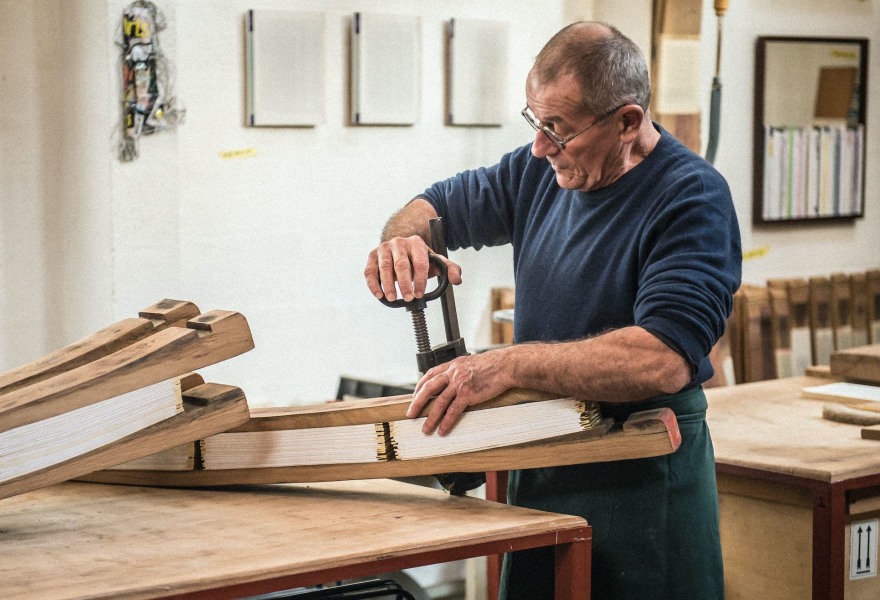17 january 2023, Flor Linckens
Denmark: a Belgian artist that is up against an information overload
Until 18 February, COPPEJANS GALLERY in Antwerp is showing the second part of a solo exhibition on Denmark, the Belgian 'artist-archivist' who is known for the rebellious ways in which he 'archives' information.
As the name suggests, 'Denmark' is a pseudonym. The artist's given name is Marc Robbroeckx and the name Denmark is not a reference to our Scandinavian neighbours, but rather to the Flemish nickname 'Den Marc'. The Belgian artist was born in 1950 and studied art history and archeology at Ghent University. After completing his studies in 1972, Robbroeckx feels somewhat overwhelmed when he looks at the enormous amount of information that has accumulated in his house. On the one hand, he feels a certain powerlessness because he thinks that the abundance of information holds him back, rather than helping him. At the same time, he feels that his own thinking will never be able to keep up with a cumulatively growing and unmanageable mass of opinions, theories, ideologies and facts. He decides to rename himself "artist-archivist".

It forms the starting point for a long-term project in which Denmark starts destroying, reconstructing and transforming publications. They are offered a second life, but are in fact stripped of their primary function: as carriers of knowledge. Denmark is making an effort to reduce the volume of publications, knowing that he will never be able to keep up with the speed at which new material is printed. He cuts out books and newspapers horizontally, burns and freezes publications, pulverises newspapers (including headlines from the Gulf War) and puts them in glass jars. He folds pages from magazines with copper wire, makes sculptures from cut-out books that are pressed between two clamps and glues Mao Bibles between wooden slats. For a work from his series "Dood Archief" ("Dead Archive") he used all the exam papers that accumulate in a single year in a high school.

Ironically enough, Denmark often uses traditional and labour-intensive methods from the printing trade to create his paper sculptures and installations. A second ironic element is that he is in fact building a new archive himself, a kind of übermeta archive of archives (of archives).
Through his practice, Denmark raises questions about the mass production of printed paper and the information overload that comes with it. What is the role of media in our thinking? Denmark also uses his work to raise critical questions about our wasteful and consumerist culture. Incidentally, the artist regularly adds a healthy dose of self-mockery.

In our current digital world, in which the information supply has exploded and fake news is a persistent parasite, the questions Denmark asks have only become more relevant. Moreover: After seeing this exhibition, viewers will never look the same way again at the newspapers in the paper bin and that pile of books that really need to be read again.
Until 30 April 2023, Denmark's work can also be seen in a collection presentation of the M HKA in Antwerp. His work has also been shown at SMAK, Bozar, Centre Pompidou, Mu.ZEE, the Van Abbemuseum, the Palace of Justice in Antwerp and the Musée d'Art Moderne de la Ville de Paris, among others. His work has been collected by, among others, the Royal Museums of Fine Arts of Belgium, the Paris Bibliothèque Nationale, Mu.Zee, the SMAK, the The ARCO Foundation Collection and the collections of ING, Belfius, AXA and Delen Private Bank.
